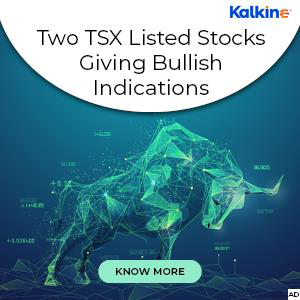Highlights:
- CAE's fair value is estimated significantly higher than its current stock price, indicating a notable undervaluation.
- The Two-Stage DCF model indicates substantial equity value.
- CAE faces challenges with high debt coverage, but insider activity points to undervaluation.
The aerospace and defense sector is recognized for its complexity and constant evolution, driven by technological advancements and fluctuating government and commercial needs. Companies like CAE Inc. (TSX:CAE) hold an essential position in this industry, providing crucial services related to training, simulation, and mission-critical operations. Accurately determining the value of companies like CAE is vital for assessing their market performance.
Understanding CAE's Fair Valuation
To evaluate CAE Inc.'s market valuation, a Two-Stage Discounted Cash Flow (DCF) model is applied. This model effectively accounts for varying growth phases in a company's life cycle, which is particularly relevant for a leading entity like CAE. The model estimates the company’s free cash flows over the next decade, applying an appropriate discount rate based on the company's market characteristics.
Estimating the Terminal Value
After evaluating the short-to-medium-term cash flows, the terminal value is estimated to account for the company’s future cash flows beyond the projection period. Using the Gordon Growth Model, the terminal value incorporates a perpetual growth rate aligned with long-term government bond yields. The discounted terminal value is added to the present value of the earlier cash flows, yielding an overall estimated equity value. Based on the share count, this results in an intrinsic value per share that points to a considerable undervaluation in relation to its current market price.
Key Assumptions and Sensitivities
The DCF model relies on several assumptions, including the discount rate and future cash flow projections. The chosen discount rate reflects the market volatility and inherent challenges in capital management within the aerospace and defense sectors. However, the model does not account for all factors, such as the cyclical nature of the industry or the company’s future capital needs. These variables could influence the accuracy of the intrinsic value estimate.
Strengths and Weaknesses
While CAE is seen as undervalued based on the DCF model, some challenges are apparent. One significant concern is the company’s debt coverage, which is not fully supported by its earnings. However, the company presents opportunities for improvement, as insider activity signals that the market may perceive the stock as undervalued. High debt levels remain a major concern and will require careful management in the near future.
Other Factors to Consider
Although the DCF model provides a structured approach to estimating CAE's intrinsic value, it is not the sole tool for evaluating the company. A comprehensive review of financial disclosures and governance measures provides deeper insight into CAE's strategic direction and capacity to execute its plans. Additionally, monitoring insider transactions can offer context on the internal sentiment within the company.
Along with the DCF approach, comparing CAE’s performance with other companies in the aerospace and defense sector is essential to understand its market standing fully. This broader comparison helps identify the company’s strengths and weaknesses within the context of overall sector trends and economic conditions.





